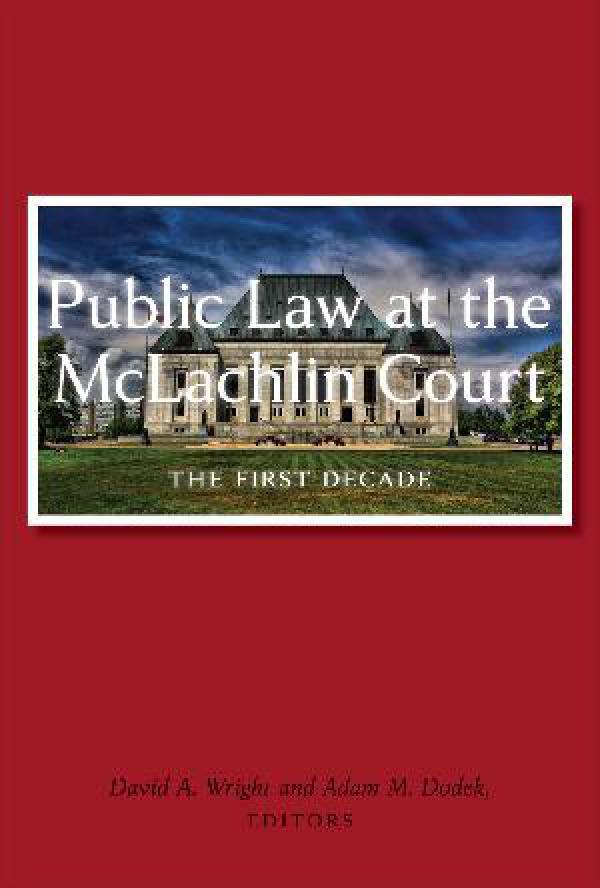| Author(s) | |
|---|---|
| Publication Year | |
| Publisher |
In Search of Coherence
The Charter and Administrative Law under the McLachlin Court
From: Public Law at the McLachlin Court
$1.90
With her appointment as chief justice, Madame Justice McLachlin inherited one of the most exasperating analytical tangles in modern public law. When an alleged Charter violation occurs as a result of an administrative decision, should the judicial review analysis proceed on Charter principles or administrative law principles? These two analytical avenues sit uncomfortably alongside one another. Whenever administrative decision making is involved in the alleged breach of Charter rights, the Court must make a preliminary choice as to the analysis to be pursued and this choice, in turn, determines the range of public law remedies available.
This uneasy relationship between administrative law and the Charter has surfaced more frequently in recent years as Charter jurisprudence has matured and possible Charter violations are weeded out of proposed legislation and regulations before they are ever enacted. Charter violations are more likely to arise as a result of discretionary administrative action rather than appearing explicitly in the wording of a legislative or regulatory enactment.
The analytical tension between Charter review and administrative law review gives rise, in turn, to more fundamental questions about the values informing public law. Was the introduction of the Charter intended to nourish administrative law values? During the McLachlin Court’s tenure, a strong argument for the coordination and, ultimately, the unity of public law values has taken hold in the scholarly literature. According to this theory, both areas of law are gradually merging into a unified concern for protecting individual interests from the abuse of public power. Or, alternatively, is administrative law restricted to matters of statutory authority and jurisdiction, with the Charter alone devoted to the protection of substantive rights and freedoms? The McLachlin Court inherited an ongoing search for coherence on both these levels: analytical coherence in administrative review versus Charter review, as well as coherence in the underlying values that inform public law in the post-Charter era.
Our analysis is divided into two parts. The first part tracks the Supreme Court’s approach to the relationship between administrative law and the Charter prior to the McLachlin Court, while the second part examines the approach of the McLachlin Court. We conclude that the Court has yet to develop a workable and coherent approach to the relationship between the Charter and administrative law. The seeds of a possible solution have been sown with the Vancouver Transit decision but we suggest that, although this new approach has won short-term acceptance among the members of the McLachlin Court, it is unlikely to succeed in reconciling public law analysis and values over the long term.
Contributors
Susan L Gratton
Susan L. Gratton is a former partner at McCarthy Tetrault LLP and an SJD candidate at the University of Toronto.
Lorne Sossin
Lorne Sossin is a professor and Dean, Osgoode Hall Law School.







